In February SunFounder launched a KickStarter campaign for “RasPad”, a Raspberry Pi tablet. They originally aimed for $10,000 but finished the campaign having raised over $610,000. Over 3,390 backers seemed to suggest that there were plenty of people who wanted a Pi based tablet.
Here is the promotional video from the campaign :
Full details of the KickStarter can found on the campaign page.
SunFounder contacted me and asked if I wanted them to send me a prototype unit to take a look at. There was no obligation for me to say or do anything so these are my honest thoughts. The prototype isn’t exactly the same as the final product and I’ve tried to point out any differences I was aware of.
RasPad Hardware Specification
Let’s take a look at the specification.
Main components :
- Body shell with bay to contain Pi board (compatible with Raspberry Pi Zero/B+/2B/3B+)
- 6000mAh Lipo battery (estimated 3 hours)
- 10.1″ IPS touchscreen (1280×800)
- Capacitive touchscreen (10 point multi-touch)
- 2 stereo speakers
Internal Cables
Inside the board bay there is :
- microUSB plug (5V output to the Pi)
- HDMI plug (HDMI in from the Pi)
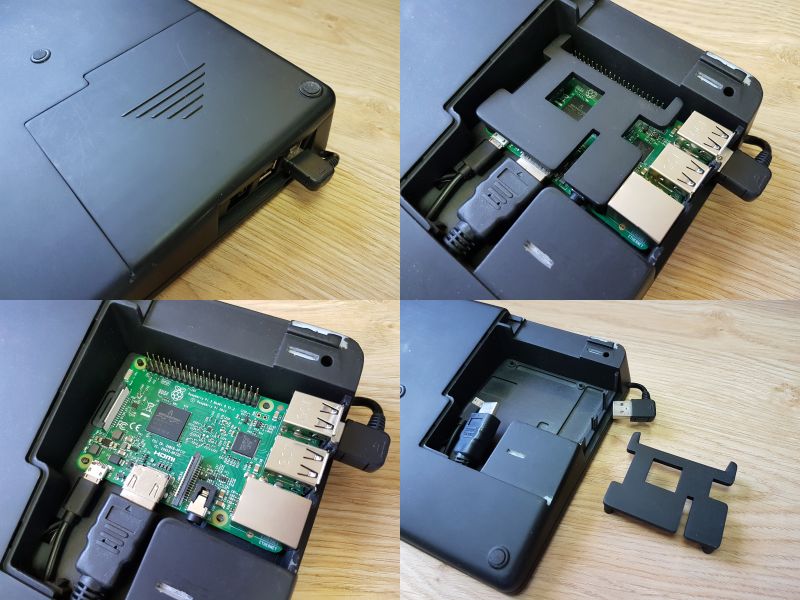
Right-hand side ports :
- HDMI in
- 3.5mm audio out
- Touchscreen microUSB out
- 5V DC in
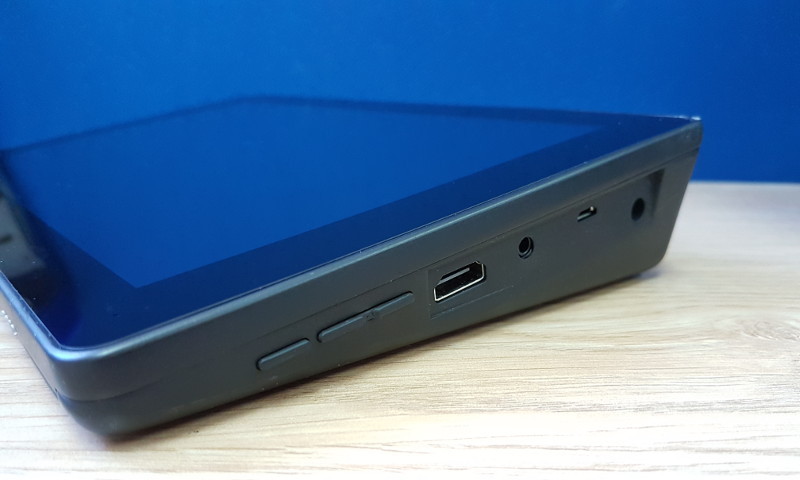
The three buttons are :
- Power
- Brightness/Volume up-down
Left-hand side ports :
- 4 USB ports (3 available with 1 used for the touchscreen)
- Ethernet
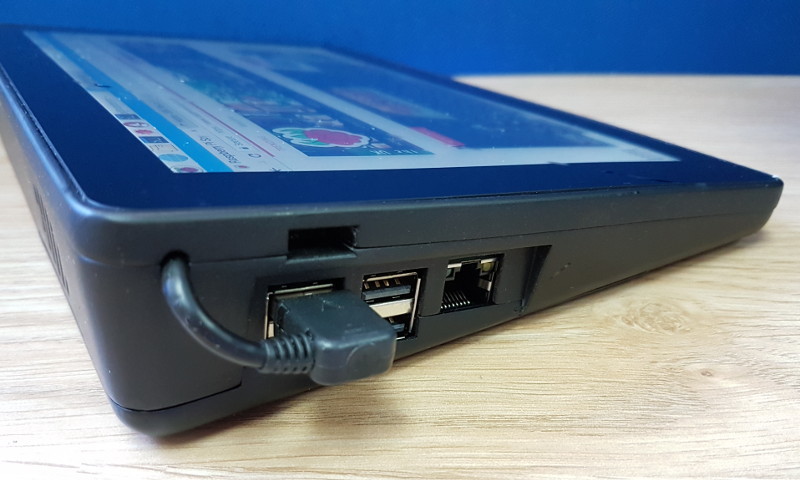
Compatibility :
The RapPad was created around the Pi 3 but is compatible with the Pi Zero, B+, Pi 2 and Pi 3B+.
The RasPad Raspberry Pi Tablet
On first glance you might think the RasPad is simply a case with built in screen. In order to bring together the screen, the battery and all the connectors the RasPad has to offer more than most Pi cases. In this case it includes a custom-made PCB which provides the audio/video connectivity as well as battery management functions. If you attempted to make your own Pi tablet these are all things you would quickly discover are difficult to get right while avoiding the whole thing being a mess of wires. What you are getting is a product where this has all been dealt with.
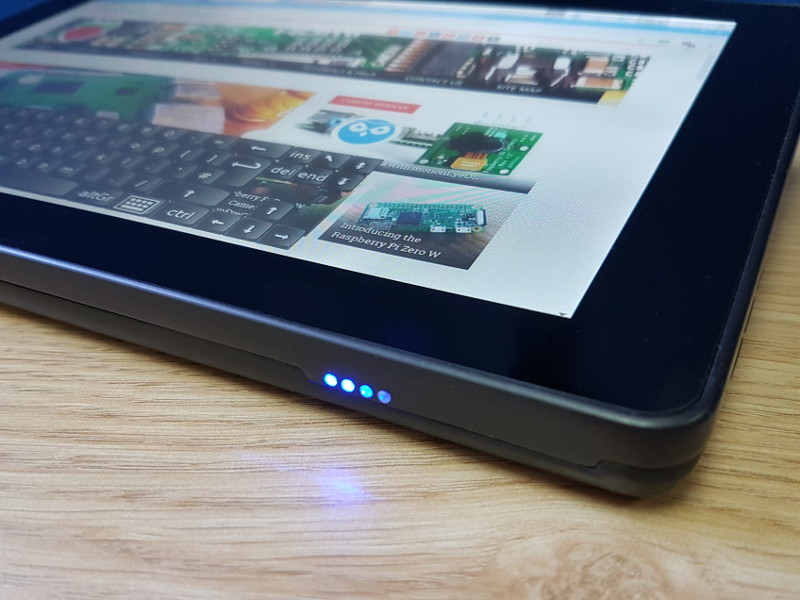
The prototype shell is made of 3D printed plastic and in my review model this plastic was finished with a black coating. The production units will be made with injection molded plastic.
The Screen
The screen uses IPS technology and the result of this is that the screen feels fairly vibrant with a decent viewing angle. This is really important for a portable device that you are going to use on your lap or perhaps leave on a desk.
The touch works really well and responds just as you would expect from a modern touch enabled device. I didn’t have any trouble using Raspbian although some of the smaller icons take a little getting used to.
Keyboards and Typing
For typing you can use an onscreen keyboard or connect up a Bluetooth keyboard. My device came with the “matchbox” keyboard installed but I changed this to an alternative called “Florence”. Once enlarged slightly this was fine for basic typing tasks. I would not want to do much real development with an on-screen keyboard so I decided to try adding a real keyboard.
I easily paired my Perixx Bluetooth keyboard and it made a nice combination because they were both the same width.
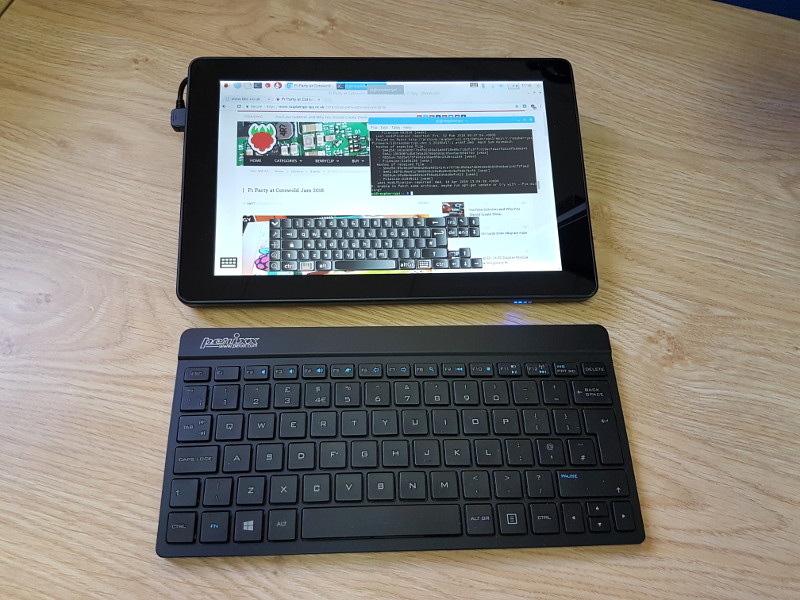
If you plan on doing lots of typing an external keyboard is going to be a useful accessory. You can use Bluetooth or simply plug in a USB keyboard to one of the Pi’s USB ports. This also applies to adding a mouse if that better suits the activity you are doing.
Is It an iPad?
This is the obvious question people will ask when discussing tablets. No, it is not an iPad. It is bigger, has a lower battery life and a lower resolution screen. Despite that it is still better than an iPad if your intended use is creativity, electronics development and project building. The “Pi inside” gives you capabilities you simply can’t have when using a standard retail iOS or Android tablet.
Pros and Cons
So what makes the RasPad better than a standard tablet?
- Ability to change or upgrade the single-board-computer inside
- Full sized USB ports
- HDMI input
- GPIO access
- Ability to use Pi camera
What makes it worse than a standard tablet?
- You need to shut down the Pi before turning off the power
- You need to wait for the Pi to boot before you can use it
The Competition
There are a few other established products out there that the RasPad will be competing with. These include the Kano and the Pi-top. They both offer educationally focused environments with lots of effort made to develop resources and training material. The Pi-top is almost certainly the most popular portable option with the Kano dominating the educational arena. The Kano and Pi-top set the standard extremely high so SunFounder will have to work hard with their resources and support to become a player in this marketplace.
The first resource users of the RasPad are going to want to see is a user guide. Many project ideas and resources will already be available for other touch-screen projects but SunFounder will need to help contribute to this and help fertilise the demand for touch-screen Pi projects.
Final Thoughts
Despite having a custom PCB inside it seems a shame they didn’t take the opportunity to communicate with the Pi directly and provide software battery status within Raspbian and also allow a full graceful shut-down/power-down cycle.
The other feature I would have preferred to see in the design is the ability to secure the Pi PCB and bay door with screws.
My overall impression is that I like the RasPad Raspberry Pi Tablet a lot. Whether you can justify the cost will come down to your intentions and personal circumstances. It doesn’t replace a conventional tablet but easily beats one when it comes to customisation and development projects.
Buy a RasPad Pi Tablet
The RasPad can currently be ordered from the Official SunFounder website. The kit including a Pi 3B+ is currently $209. The RasPad on its own is $149.

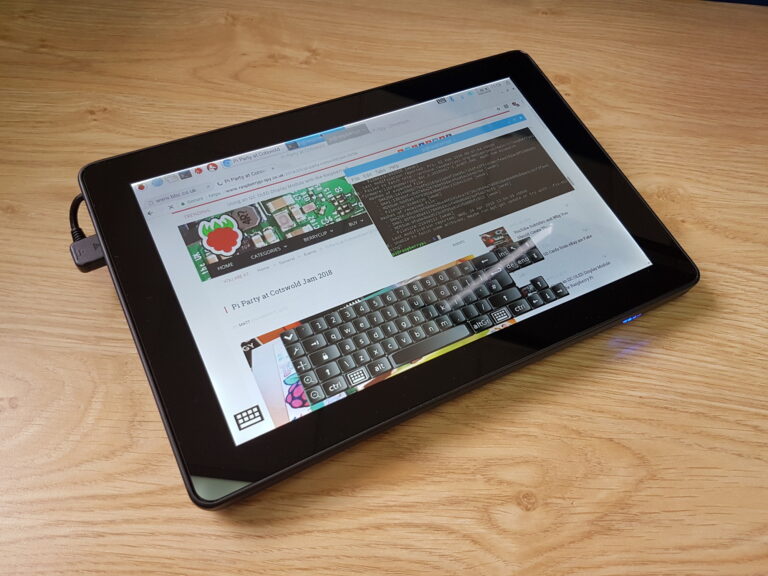
3 Comments
Why would anyone pay 60$ more for a pi 3 b+ when it only costs 35$ for one?
The extra is $60 is for a Pi, keyboard and SD card. Still possible to get that somewhere else but it gives people the option of not having to bother sourcing individual components.
“The touch works really well and responds just as you would expect from a modern touch enabled device. I didn’t have any trouble using Raspbian although some of the smaller icons take a little getting used to.”
I received my RasPAd two days ago. For me the use of the touch using the out of the box setting is annoying.